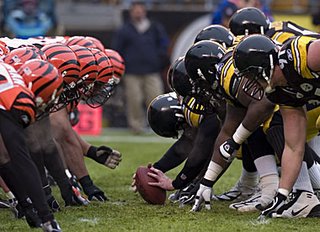Shinto (神道) or The Way of the Kami.Shinto is the national faith of Japan with its roots stretching back to 500 B.C., and is a poly-theistic one venerating almost any natural objects ranging from mountains, rivers, water, rocks, trees, to dead notables. Among the natural phenomena, the sun is most appealing to the Japanese and the Sun Goddess is regarded as the principal deity of Shinto, particularly by the Imperial Family. To most Japanese, Shinto is a part of the backdrop of daily life, a set of customs that are to be followed more or less, but not to be pondered deeply. Unlike more organized religions, Shinto is characterized not by scriptures and churches but by archaic myths, a concern for purity and defilement, and a chaotic amalgamation of shrines and rituals centered on the most primitive terms of survival. It revolves around the rites and festivals of the community, not of the individual.
Although Shinto is the national faith of Japan, what is remarkable about Shinto is not its nationally organized form, but the persistence of its local character Long before Yamato period, each village and clan has its own
kami(神). Even today, it is local kami that are celebrated in a community’s most serious rituals. Unlike Buddhism, Shinto has had very few iconography; rather, the focus of Shinto practice in general, and of Shinto art specifically, is ritual, including shamanism, the ritual handling of such natural materials such as stone and wood, ritual dance and music, particularly Kagura which is dance and music designed to call forth kami, to entertain kami, and the ensure the benefits of the presence of kami.
What the Shinto shrine signifies is the meanings of a hollowed structure consecrated to the kami who are revered and worshipped by high and low without distinction of sex. The kami are numinous entities that govern natural forces or occupy natural places. Among natural places, mountain peaks, being closest to the sky, and being also source of live-giving water, are especially favored. Mt.Fuji is the most famous Japan’s innumerable sacred peaks. Originally, a sacred place was marked simply, with a rope or some other delimiter. Nowadays, there is usually a small shrine at the summit of the mountain, while the main shrine- the one which people normally pray- is at the base, near the community, preferably in a place of great natural beauty, especially
Cryptomeria(杉) groves. The Shinto shrines often stand in sacred natural surroundings that are also beautiful and pure; they are places of natural awe and sacrality. Religious and aesthetic go hand in hand. Nature reveals sacrality and the aesthetic sensitivity to its beauty has religious significance. The erection of Shinto shrine is a mark to enlighten the thoughts of the nation, to refine the minds of the masses, and to unite the national spirits, and the various other objects to make the people happy and prosperous.
Purposes of shrines
The most obvious purpose is nature-worship, ranging from natural phenomena, natural places, animals, and inanimate things. Additionally, it is hero-worship. It resulted from the belief that men or women who have done some meritorious services to the State are deified as the kami. Next, it is ancestor-worship, which holds a high position in Shinto. Lastly, it is emperor-worship. The emperor of Japan is a legitimate descendant of the kami.
Spiritual symbol of the kami
In every Shinto shrine, there is always enshrined a sacred object called Shintai which means the Divine Body. It is spiritual symbol of a kami, and it is kept strictly secret. As a rule, its inspection is never permitted to the public but to the chief priest of a shrine in which it is installed, or only on a special occasion. Most Shintai are represented by a round mirror, jewel, sword, halberd, scepter, bow, arrow, or stone.
Visiting a shrine
Torii(鳥居). Every Shinto shrine is bound to be provided with one or more torii. Torii is an indispensable symbol of making the hallowed ground of the Shinto shrine, so that it is put up even in case of lacking of sanctuary.
Koma-inu(狛犬) or Korean dog, the function of this animal is generally like Nio, whose object is to prevent the entry into the holy precincts of evil spirits. Ablutions, these are performed by rinsing hands and mouth from a stone basin of pure water before praying at a shrine.
Shimenawa(注連縄), the straw rope is a sign to avert evil spirits and a demarcation against dirt or filth. In general, it is a symbol empowered to exclude anything that may soil the purity of Shinto. It is thought necessary that the straw be renewed as often as possible. The Shimenawa is woven of clean rice-straw leftward or sinistraly, from 7, 5, or 3 strips of straw are hung down at intervals. They represent the three primitive kami, the seven heavenly kami, and the five earthly kami. At the end of straw is never cut off and woven in, being left as it is, signifies simplicity and cleanliness according to the viewpoint of Shinto. It is often festooned with white paper strips, called gohei. Priests and shrine maidens, only large shrines have official priests. The shrine maidens are thought to originate from shamanesses of antiquity. Along with their other deities, they perform Kagura dance, a vestige of ancient trances in which shamanesses served as the kami’s mouthpiece.
Oharai (お祓い), it is the most common rite which is purification by waving what looks like feather duster of shredded paper. This dusts away defilements.
Individual visitors to the shrine simply stand outside before the worship hall, toss a coin into the offerings box, pull on a dangling rope with a bell or clanger at the top, clap their hands twice, bow briefly in prayer, clap their hands again and leave. The sound of the clanger and of the handclap is intended to alert the kami to the believer's presence.
Original shrines
In the primitive ages, the kami were worshipped first in an isolated, natural wood, and then in a spot thoroughly purified, planted with trees and fenced with stone around. The earliest constructed Shinto shrines suggest the form of single dwelling houses in ancient times and were in fact intended to house ancestral spirits who would be given food offerings. This pre-historic Japanese ancestor worship was incorporated into the Shinto practice of enshrining deities named in the
Kojiki(古事記) and historical heroes as kami. As Shinto became more established in Japanese society, people needed more convenient access to worshipping the kami, and shrine complexes were built within villages and cities. More convenient methods of conducting rituals were adopted and led to the introduction of the shrine complex with ceremonial buildings in addition to the hall enshrining the kami. On an early emperor’s dwellings, the Shinto architecture developed a shrine complex surrounded by a fence entered through a sacred arch or torii. The complex included a main hall for worshipers (haiden), a smaller kami hall (honden) and a ritual landscape. Worshippers in the haiden directed their prayers to the honden, which housed a specific kami symbolized by a sacred object from Japanese mythology such as a mirror or sword.
Ise(伊勢) shrine has been said to be a symbol of Japanese state and its ultra nationalistic ideology. According to Watanabe Yasutada , ‘I was stuck by delicate balance and harmony of proportion displayed by each building, and the unexpected radiance of shrine surprised me. The details created an overwhelming impression of abstract geometrical shapes, of circles, planes, and angels. The partial view of Shoden is tantalizing and invites one to imagine for himself the unseen portion of the inner shrine. The harmony and refined elegance achieved by the shrine architecture at Ise are intoxicating to lovers of beauty and draw one into the architecture itself.’
There are two shrines in Ise, the
Naiku,内宮, (Inner shrine) of Amaterasu or the goddess of the sun, and
Geku,外宮、 (outer shrine) of the grain deity. The Naiku at Ise also houses the sacred mirror, which forms a part of the imperial regalia, along with sword and jewel. These are symbols of divine authority. The high priest of Ise was traditionally an imperial princess, reflecting Japan’s early history of shamanesses, priestesses, and ruling empresses
In early recorded history, each new emperor had to build a new place- even a new capital- to avoid pollution from the death of his predecessor. Later in Nara period, it was rebuilt on an adjourning plot whenever a new emperor was installed. This practice had a parallel in shrines, which were periodically torn down and completely rebuilt on adjourning plots. Today, Ise is the only shrine to continue this practice. It is rebuilt every 20 years, a tradition that has continued almost uninterrupted for 1,300 years. The rebuilt of Ise is a long, complicated ritual involving the preparation of special timber, building a new shrine, transporting the kami, and dismantling the old shrine. The most recent rebuilding was in 1993.
Ise was built in Shinmei style, based on an emperor’s storehouse because of its function as the repository for the sacred mirror. The roof line was straight which was considered as a native feature without Buddhist influence.
Izumo (出雲)shrine Izumo Taisha is the largest shrine hall in Japan. It is dedicated to
Okuninushi-no-mikoto(大国主命), a deity who is closely associated with agriculture and medicine, as well as marriage. It is well known throughout Japan for the Izumo-Taisha style, is considered oldest, most revered and basic style of Shinto shrines in Japan. The shrine environs are sacred and therefore ecologically pristine, with towering Cryptomeria trees. Its 11 large torii are very impressive. Izumo shrines are enclosed by fences, which ordinary people cannot enter. The courtyard is covered with pebbles, giving it clean and bare appearance.




